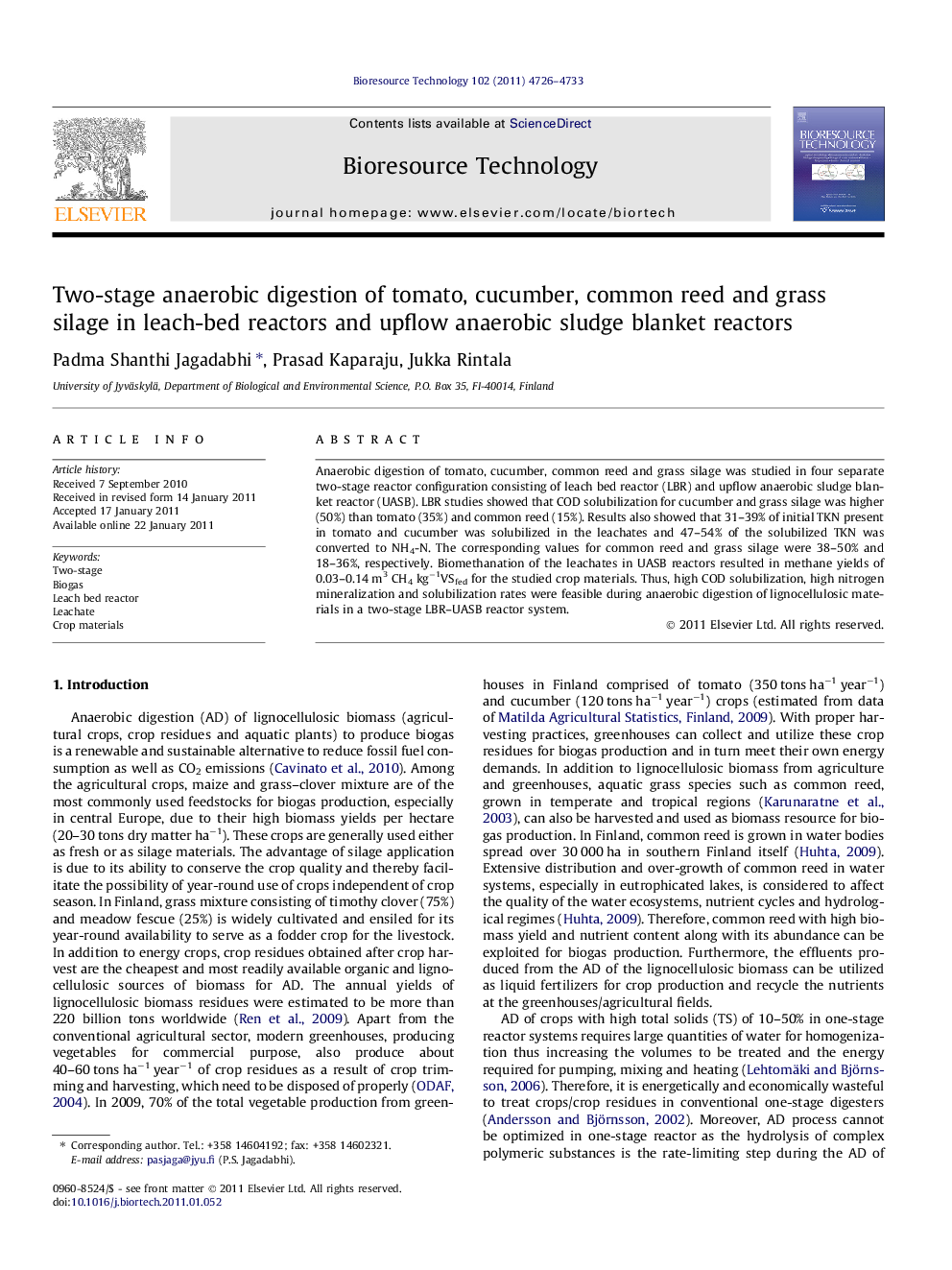| Article ID | Journal | Published Year | Pages | File Type |
|---|---|---|---|---|
| 10395181 | Bioresource Technology | 2011 | 8 Pages |
Abstract
Anaerobic digestion of tomato, cucumber, common reed and grass silage was studied in four separate two-stage reactor configuration consisting of leach bed reactor (LBR) and upflow anaerobic sludge blanket reactor (UASB). LBR studies showed that COD solubilization for cucumber and grass silage was higher (50%) than tomato (35%) and common reed (15%). Results also showed that 31-39% of initial TKN present in tomato and cucumber was solubilized in the leachates and 47-54% of the solubilized TKN was converted to NH4-N. The corresponding values for common reed and grass silage were 38-50% and 18-36%, respectively. Biomethanation of the leachates in UASB reactors resulted in methane yields of 0.03-0.14Â m3 CH4 kgâ1VSfed for the studied crop materials. Thus, high COD solubilization, high nitrogen mineralization and solubilization rates were feasible during anaerobic digestion of lignocellulosic materials in a two-stage LBR-UASB reactor system.
Related Topics
Physical Sciences and Engineering
Chemical Engineering
Process Chemistry and Technology
Authors
Padma Shanthi Jagadabhi, Prasad Kaparaju, Jukka Rintala,
